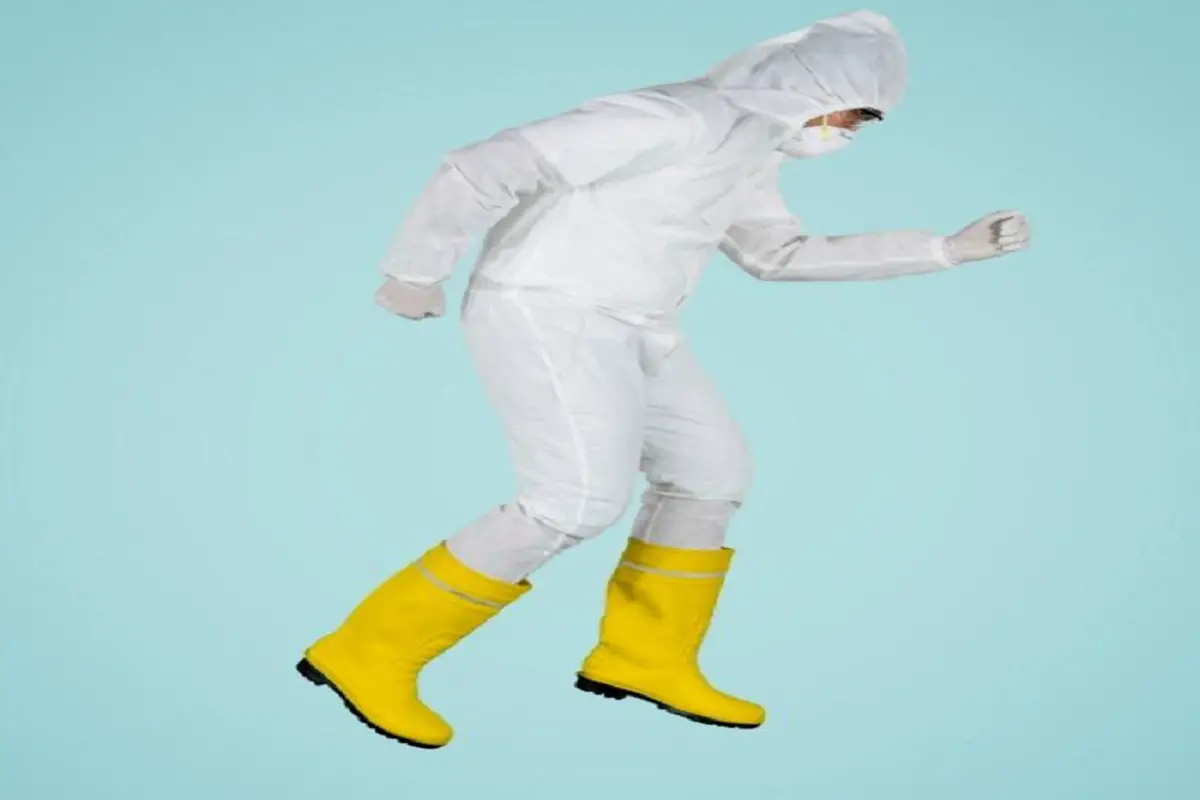Hazmat suits are very effective at what they do, but can easily become damaged if you do certain activities while wearing them. Here are 7 things you should not do while wearing a hazmat suit.
1. Smoke Cigarettes
Hazmat suits are made of different materials, depending on their intended use. Some materials used in hazmat suits include neoprene, butyl rubber, and viton.
Lit cigarettes have burning embers and just a touch of them to hazmat suit material can burn a hole right through it. While most hazmat suits can withstand minor punctures and tears, serious damage can jeopardize the safety of the person wearing the suit. This is why it is important to avoid anything extremely hot or burning, such as a lit cigarette.
If you must smoke, remove your hazmat suit first. Fortunately, if you work in an area or facility that requires a hazmat suit, chances are, you will have to remove the hazmat suit anyways upon exiting the premises.
Highly Rated Hazmat Suits
YIBER Disposable Protective Coverall Hazmat Suit, Heavy Duty Painters Coveralls, Made of SF Material
RAYGARD 30003 Polypropylene Disposable Hooded Coverall
2. Run And Jump
Do not run and jump while wearing a hazmat suit. The suit can tear and you can be exposed to hazardous materials. If you run while wearing a hazmat suit, you can easily trip and fall, tearing or puncturing the suit. The suit can also limit your mobility, making it difficult to keep your balance. If you’re not careful, you could easily fall and hurt yourself while trying to run, or worse, damage your suit.
If you do happen to trip and fall while wearing a hazmat suit, make sure to inspect thoroughly with the help of another person before proceeding with your task.

Looking for a new HAZMAT suit? Check out our our Hazmat Suits Buying Guide.
3. Sit On The Ground
Do not sit on the ground while wearing a hazmat suit. It may be tempting when it gets hot (inside and out) to sit on the ground when you need to take a break. However, this action can potentially damage your hazmat suit. The bottom of the hazmat suit is not designed to withstand prolonged contact with abrasive surfaces. If you must sit, do so on a clean chair or bench or another surface that will not tear your suit.
4. Walk Over Broken Glass
Do not walk over broken glass while wearing a hazmat suit. This may be difficult in some areas, such as car accidents or old industrial facilities, but glass can easily puncture the suit. This can easily happen if you walk, sit, or fall onto broken glass shards. If you must enter an area with broken glass, be sure to wear boots, gloves, and long pants to protect your hands and legs. If you do damage your hazmat suit, it is important to replace it immediately. A damaged hazmat suit is a serious health risk.
5. Sit On A Concrete Step Or Ledge
Concrete is a hard, abrasive surface that can have small protruding rock edges. One of these can easily tear or puncture a suit if you sit on them. If you must sit, find a smooth surface away from any debris. Unfortunately, many outdoor work areas are limited in sitting options, and concrete ledges or steps are often nearby.
6. Swim Or Wade In Water
Most hazmat suit wearers will fortunately not attempt to swim or wade into water. However, if a situation arises to do so, avoid it. A hazmat suit is waterproof, however, an open zipper, seam, or tear can easily let water in and even fill the suit. This could lead to mobility problems, and even drowning in worse-case scenarios. Even if the water is only a few inches deep, you may have to deal with suit damage. The water can also be contaminated with chemicals or bacteria that can harm your health.
7. Throw Or Catch Things
Do not throw or catch objects while wearing a hazmat suit. This includes tools, machinery, parts, keys, or just about anything else. When working in teams, time pressures could make tossing an object to a co-worker tempting, but this can easily damage a hazmat suit if you are not careful.

